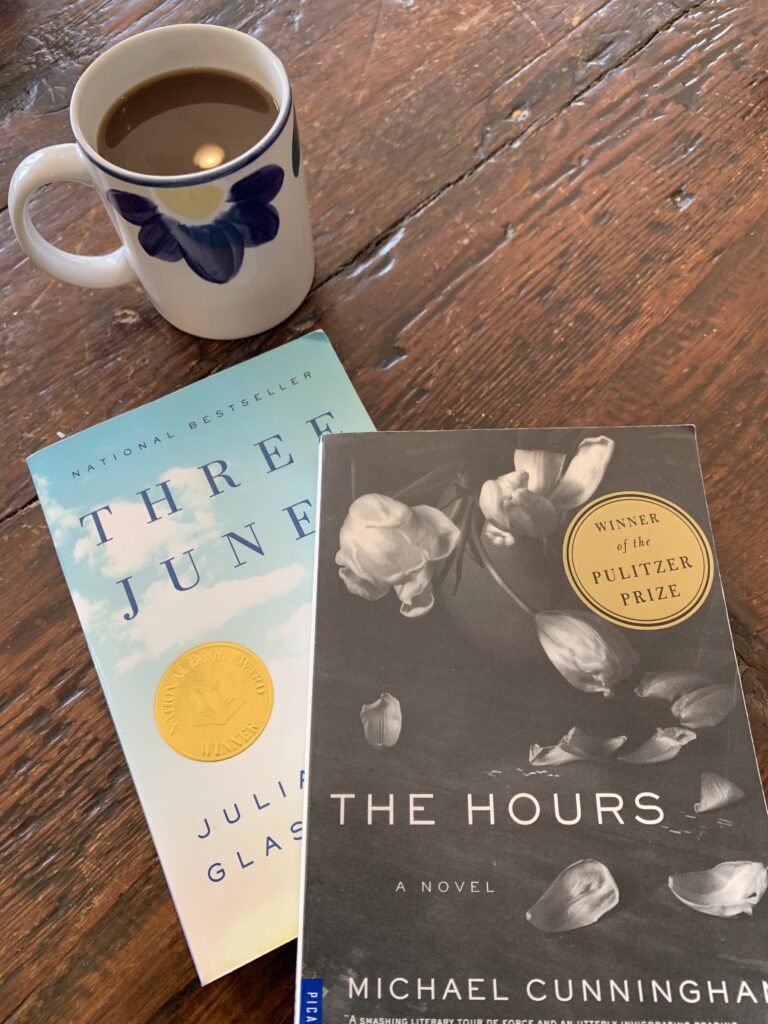I recently returned to two novels I loved years ago, when they first came out.
First, Michael Cunningham’s The Hours, which to my mind is a perfect novel. Reading it again, I’m in awe of the way this novel echoes Mrs. Dalloway in characters, story, and theme (war trauma for Mrs. Dalloway, AIDS trauma for The Hours; the aliveness of the city for both). The Hours is amazingly well-plotted too, the way the three characters/three timeframes not only talk to each other thematically, but also come together in a surprising yet inevitable way after one character’s death.
Also, sentences. The Hours’ sentences, at least in Clarissa’s sections, are Woolfian, echoing Mrs. Dalloway. And just as Mrs. Dalloway often does, The Hours changes point of view mid-paragraph: Here is The Hours’ 1980s Clarissa, on her own June morning. She “straightens her shoulders as she stands at the corner of Eighth Street and Fifth Avenue, waiting for the light. There she is, thinks Willie Bass, who passes her some mornings just about her. The old beauty, the old hippie, hair still long and defiantly gray, out on her morning rounds in jeans and a man’s cotton shirt, some sort of ethnic slippers (India? Central America?) on her feet.” Such a beautiful novel.
So then I returned to Julia Glass’s Three Junes, which covers some of the same territory as The Hours, with the AIDS crisis as a kind of background character, menacing all the other characters. I also remembered Three Junes as similar in structure to The Hours, and in a way it is, with three POV characters, three main sections. But the old-fashioned pace in Three Junes is what I noticed this time around: this is a leisurely, spacious novel about a family. And main character Fenno seems straight out of Henry James.
Anyway, both novels were wonderful escapes, but they also seem pertinent right now, with our own sad and frightening pandemic backdrop.

